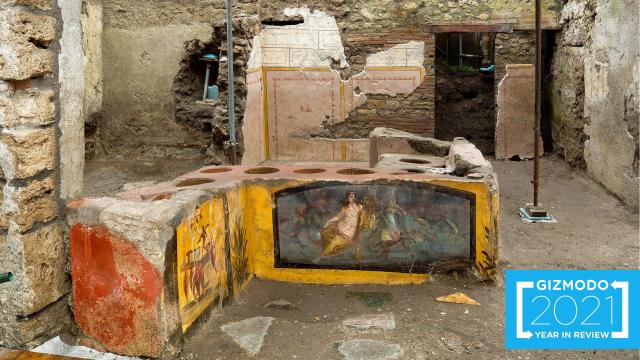In 2021, archaeologists learned more about a famous bog body known as the Tollund Man, daily life in Pompeii before Mount Vesuvius’s fateful eruption, some of the oldest human handprints on Earth, and much more. Enjoy these 11 postcards from humanity’s ancient past.
Bronze Age Coffin Under a Golf Course
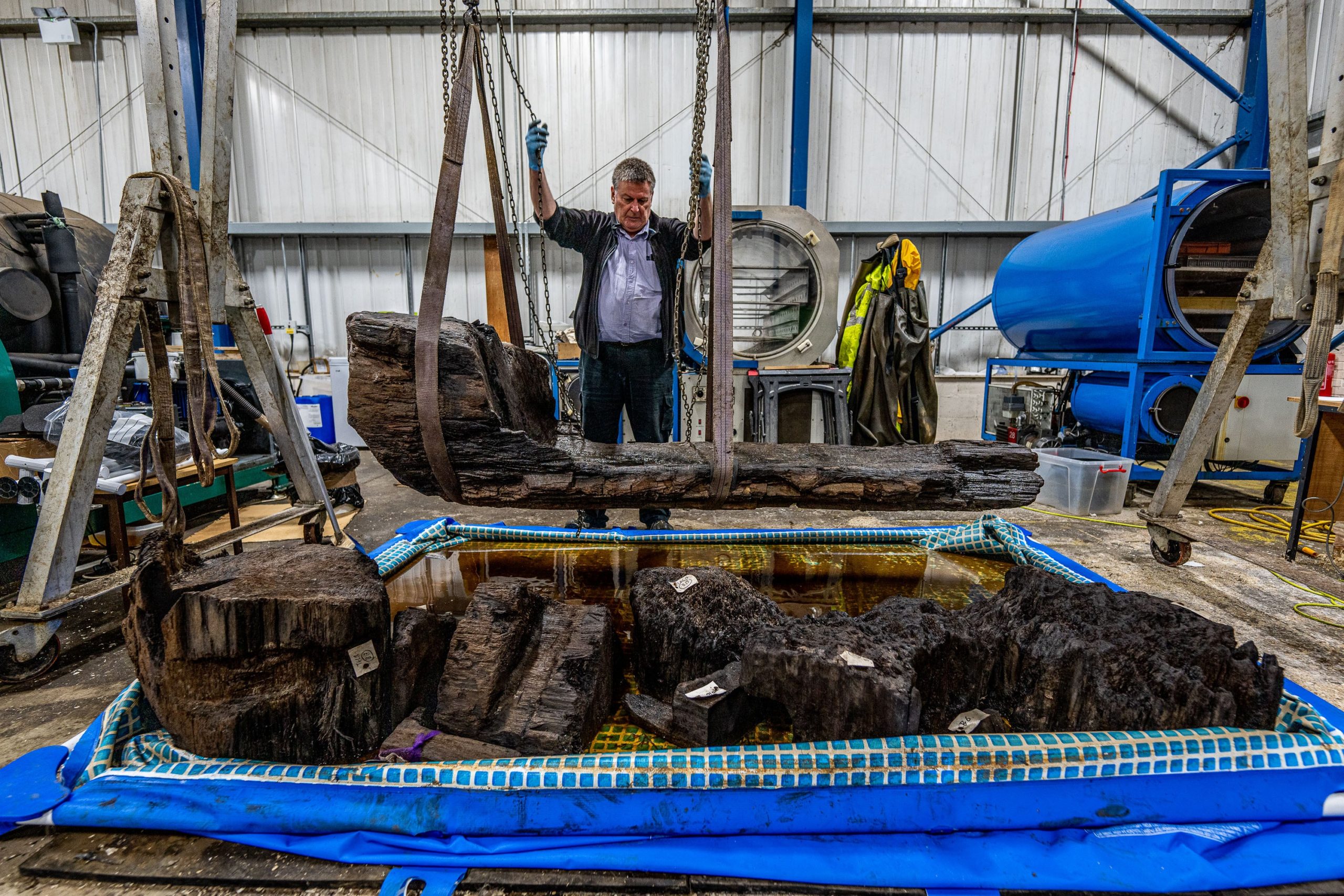
We’ve all been there. You’re doing routine maintenance on a golf course and stumble across the burial grounds of an important person from the Bronze Age. OK, maybe not all of us have been there, but workers at Tetney Golf Club in Grimsby, England found a 4,000-year-old, single-cut oak coffin containing human remains in a water hazard, along with a ceremonial axe. I personally like this find because of the dust-to-dust-ness of it all. One day you’re the most powerful person around; a few generations later, you’re part of the furniture on the 15th hole.
A Lost Egyptian City
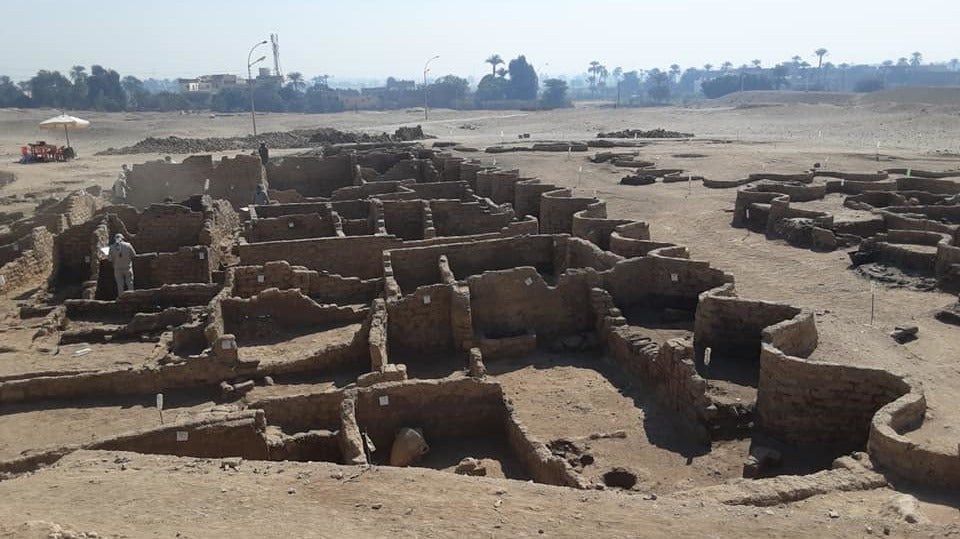
A 3,400-year-old city was uncovered near Luxor, Egypt this year, complete with mud-brick walls and rooms still filled with the remnants of daily life there. A large bakery, a cemetery with rock-cut tombs, and manufacturing workshops have also been found, and excavations at the site are sure to reveal much more.
500-Year-Old Venetian Beads in Alaska
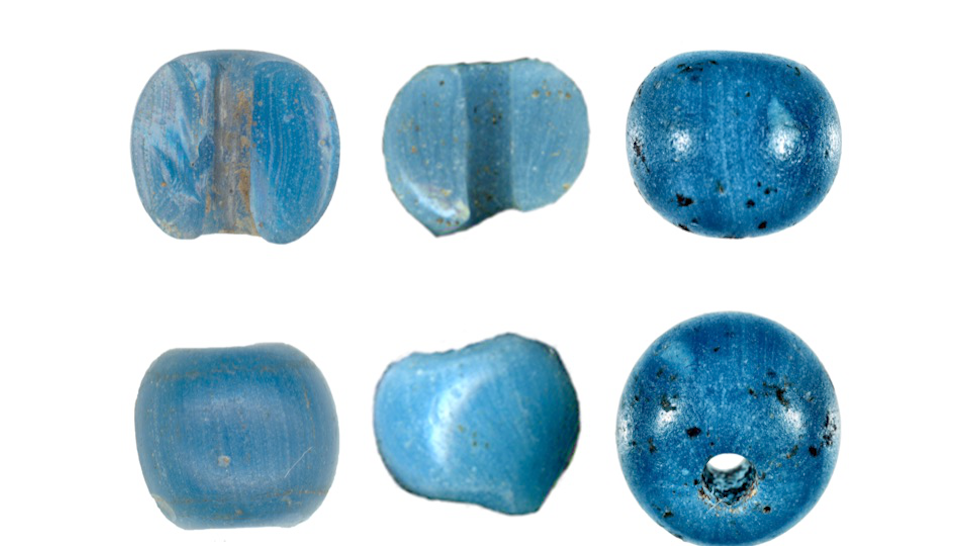
These light blue beads have been found in North America before, but this year archaeologists announced that a group of beads found in Alaska predated colonial arrival. Some time between 1397 and 1488, the beads made a journey from Italy to Alaska. The archaeological team believes the beads were moved east from Venice and across the Bering Strait, arriving in Alaska via Russia.
A Fast Food Joint in Pompeii

OK, this one was announced in the last week of 2020, but humour us, as it didn’t get onto last year’s list. Pompeii (and the nearby town of Herculaneum) are famous for the preserved remains of their cityscapes and citizens, which were buried in volcanic ash after Mount Vesuvius erupted in 79 CE. Last December, archaeologists in Pompeii announced the discovery of a well-preserved thermopolium, or food-and-drink stand. Thermopolia sold food doled out of amphorae that was to be eaten on the go. The remains of food items like duck, swine, goat, fish, land snail, and beans were found on the site; perhaps some of it was eaten on the very day of the eruption. The find is yet another that makes the ancient past feel like it was just yesterday.
The Tollund Man Turns Over His Tummy

The Tollund Man was probably hanged to death some 2,400 years ago, and his exquisitely preserved body was discovered in a bog in Denmark in 1950. Scientists investigated the contents of his stomach this year, finding that, in the day preceding the man’s death, he ate porridge and fish — a delightful combination — as well as various seeds and plants.
A Crucified Skeleton

Though crucifixion was a widely known form of torture and execution, direct evidence for it is surprisingly rare. This year, archaeologists in the UK reported the first evidence of a Roman crucifixion in England, in the form of a nail lodged in the leg bone of a man who died in his late 20s or early 30s.
The First Known Pregnant Mummy
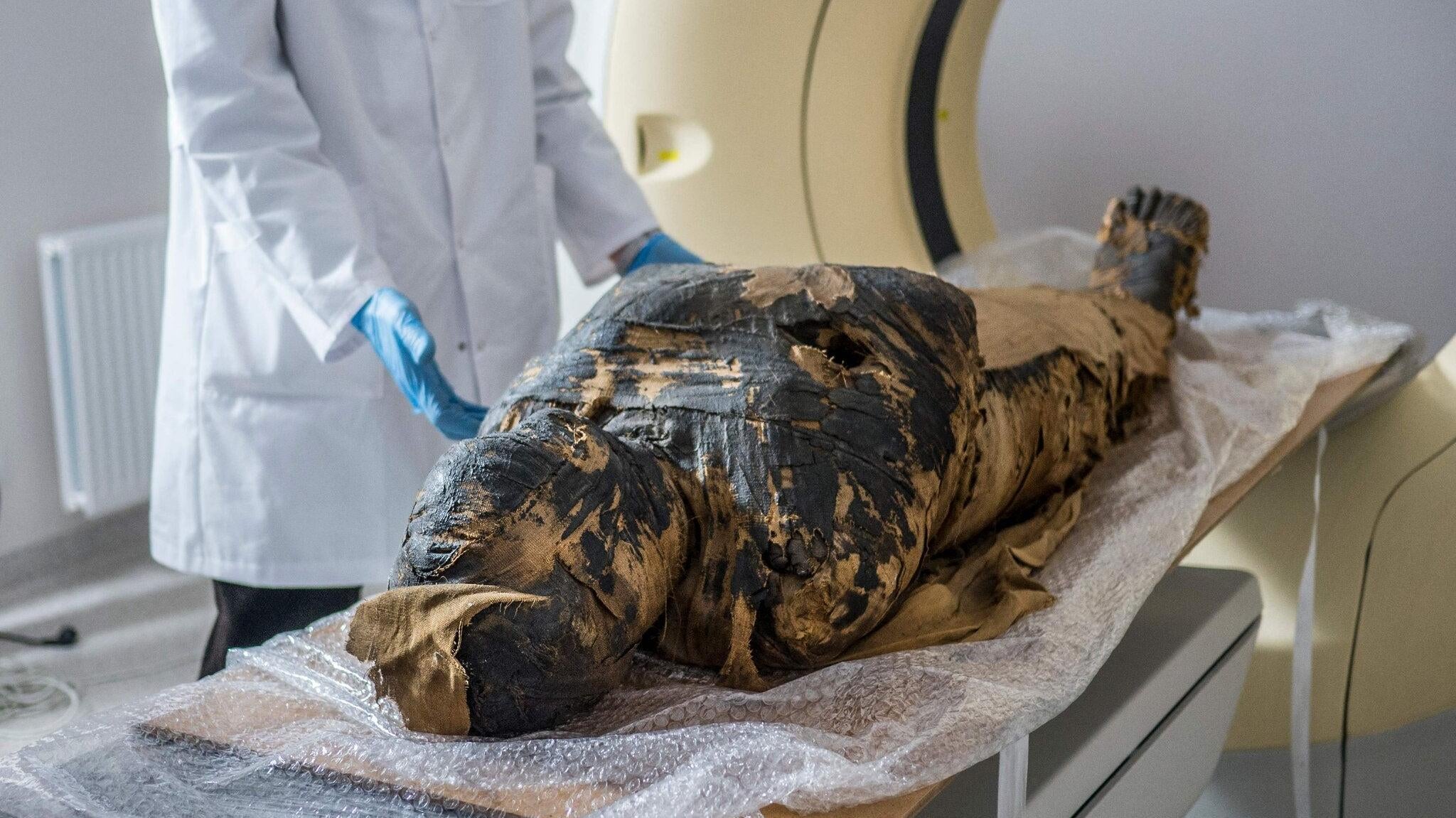
The headline here is what you get. A recent scan of a mummy thought to be a male priest revealed the remains of a pregnant woman who died in Egypt some 2,000 years ago. The body was embalmed like so many others, but X-ray and CT scans showed a foetus still in the womb, mummified along with the larger body. Whether more pregnant mummies are out there remains to be seen, but for now this mummy is the most mummy of them all.
(Maybe) the Most Ancient Artwork

These hand and foot impressions were discovered near a hot spring on the Tibetan Plateau. The prints were made between 169,000 and 226,000 years ago, predating the famous cave paintings at Lascaux and Sulawesi by over 120,000 years. The archaeologists frame them as the earliest known artwork made by humans; whether you buy that those ancient people had artistic intentions or not is up to you. Based on their size, the team suspects the prints — 10 in all — were made by two children.
Look Inside This Wooden Time Capsule

A team of glaciologists this year cracked open a box they found on an old mountain pass in Norway, judging the artefact to be between 386 and 546 years old. Inside were the remnants of a beeswax candle; the box would have been used to schlepp candles from one farm to another.
The Oldest Intentional Burial in Africa

In May, archaeologists announced the discovery of a human burial in Kenya dating to 78,300 years ago, give or take about four millennia. That makes the individual — a child who was around 3 years old at time of death — the most ancient known intentionally buried human in Africa. There are some sites in the Levant that are older, but the burial in Kenya is well-preserved and remarkably intimate. Many things change over time, but the grief of losing a child can be felt through the ages.
An Older Date for Viking Arrival in the Americas

Using some novel archaeological techniques, a team dated a Viking settlement in Newfoundland and found that the Scandinavian culture arrived in North America 1,000 years ago, preceding Christopher Columbus’ accidental arrival by nearly 500 years. The dating method was almost as cool as the finding: the team analysed wood chips determined to have been chopped by Vikings. They dated the wood chips with precision thanks to a solar storm that occurred in 993 CE, leaving a unique signature in the tree rings.
